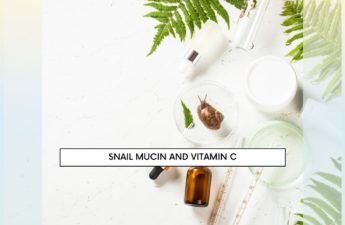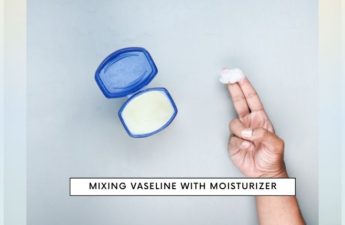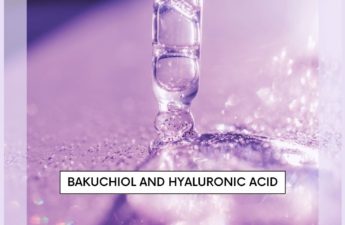Exfoliation is a skincare step that removes dead skin cells and purifies your pores. As a result, your skincare products penetrate into your skin and perform better after removing impurities and dead skin cells. This is a crucial step to achieving glowing and healthy skin that people often overlook.
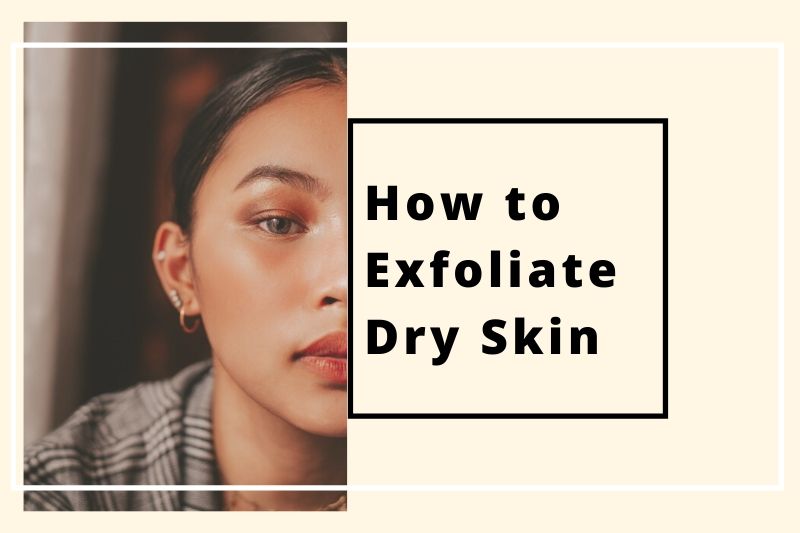
Benefits of Exfoliation
- unclog pores
- increase skin cell turnover
- improve circulation
- allow skincare products to perform better
- even out complexion
- improve acne skin
- fade scars and dark spots
- smooth skin texture
Exfoliation brings more benefits than removing dead skin cells such as increasing cell turnover, even out skin tone and unclog your pores. There’s no doubt that exfoliation is for anyone regardless of their skin types or age. The question is choosing the right exfoliator and how to use it effectively. Be very careful when you exfoliate because if you do it the wrong way, exfoliation actually does more harm than good on your skin.
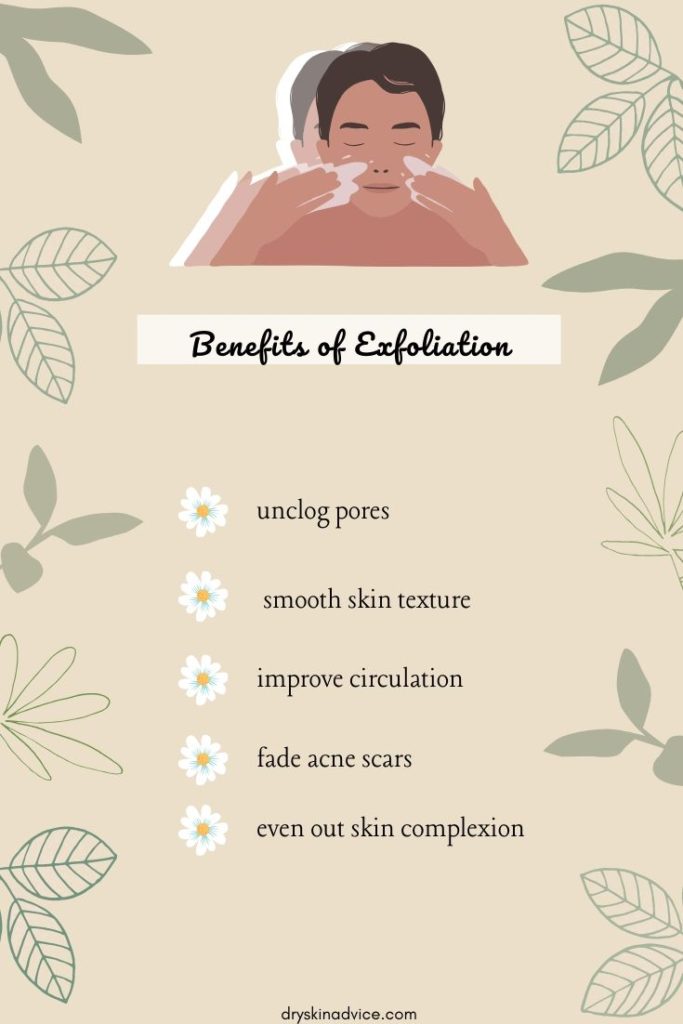
How to Exfoliate Dry Skin
- Choosing the right exfoliation approach for your skin
- Determine the frequency of exfoliation
- Don’t over-exfoliate your skin
- If you want to use both physical and chemical exfoliants together, plan and use them wisely.
Choosing Your Exfoliation Approach
- physical exfoliation
- chemical exfoliation
There are two main methods to exfoliate your skin. First, physical exfoliation which includes tiny granules that will remove dead skin cells on the top layer of your skin. On the other hand, chemical exfoliation consists of acids or fruit enzymes that will penetrate into your skin and dissolve debris and dead skin cells to help them shed from the skin.
Physical Exfoliation
Before chemical exfoliation was introduced widely, physical exfoliation is the only method to exfoliate our skin. Physical exfoliation renews our skin texture, your skin appeared brighter and feel smoother instantly. It is very effective and the result is obvious. However, physical exfoliation has a bad reputation because of rough and abrasive granules can possibly damage your skin barrier if you overdo it. Therefore, it is extremely important to pick the right product and not over-exfoliate your skin.

Examples of Physical Exfoliation
- fruit pits
- microbeads
- granular beads
- nutshells
- black sugar
- rice granules
- apricot kernel
- walnut shell powder
- diatomaceous earth
- magnesium crystal
- jojoba beads
- bamboo powders
- cleansing brush
- konjac sponge
- dry brushing
- exfoliating gloves
Physical exfoliation is rather easy to spot. It usually consists of microbeads or rough surfaces that help you get rid of dead skin cells and smooth your skin. So if you are using a cognac sponge or cleansing brush, you are already exfoliating your skin whether you are aware of it or not. Tiny granular beads and fruit pits are usually paired together with the cream or gel to make them smoother and easier to work on skin. For example, face scrub, face wash or wash-off mask. Less is more when it comes to physical exfoliation as it might damage your skin barrier if you overuse it.
Apart from that, the size and the amount the beads are very important. If the size of the beads or granules is large or rough, it might also damage your skin in the long term. Hence, physical exfoliation is not all bad, but you need to pick a gentle formula and don’t overdo it on your skin.
Chemical Exfoliation
Think about acids and fruit enzymes, these are the common ingredients for chemical exfoliation. It sounds scary to use acid on your face, but it is actually the opposite. Chemical exfoliation disconnect dead skin cells, so they will shed faster from the surface of the skin. The result is not instantaneous, it takes at least 2-4 weeks to see the result on the skin.
However, don’t jump into the conclusion that all chemical exfoliation is safe and gentle on all skin types. It depends entirely on the concentration, pH level, and ingredients. If you never tried any chemical exfoliant before, always start with a low concentration acid first. It is very common to experience irritation, tingling, and redness on the skin when using a chemical exfoliant. Thus, make sure that you pick the acid that is suitable for your skin type or it will cause irritation on your skin.

Examples of Chemical Exfoliation
- fruit enzymes
- AHA
- BHA
- PHA
- papaya enzyme
- pumpkin enzyme
- phytic acid
- mandelic acid
- glycolic acid
- tartaric acid
- retinol
- benzoyl peroxide
- lactic acid
- urea
Can You Use Both Physical and Chemical Exfoliants Together?
Physical and chemical can be incorporated into your skincare routine together. However, try to use both of the products alternately (not on the same day). In order to do that, understanding the ingredients of your skincare products is crucial. In many cases, most people don’t even know that they are exfoliating their skin because they are not aware of the products they are using.
For example, you might be using a cognac sponge plus an AHA toner every day and a face scrub once weekly. All of the above are exfoliants, therefore you are exfoliating your face every single day without noticing. Another perfect example would be a product like peeling pads. It is a combination of both physical and chemical exfoliants. When you are wiping your skin using a peeling pad, the surface of the peeling pad act as a physical exfoliant. While the ingredients that contain in a peeling pad like AHA and BHA are chemical exfoliant.
Another good example is the Korres Pomegranate AHAs & Enzymes Resurfacing Mask. This product is a combination of face scrub(physical exfoliation), AHA & Enzymes(chemical exfoliation) in one product. For products like this, it is best to use it once or twice a week at most.
Unfortunately, there are still many people who are not aware of the exfoliants they are using on their face. As a result, your skin barrier might be compromised in the long term.
With that being said, please go through the ingredient list and check your skincare products and pair them carefully to avoid the mistake.

Dry Skin and Exfoliations
How you want to exfoliate your skin, it highly depends on your skin types and the products you choose to use. However, generally speaking, scrub your face once a week is enough. Even though some dermatologists said it’s safe to exfoliate your skin two to three times weekly but we’d rather you take a careful approach and be gentle to your skin. In addition, you should always moisturize your skin after you exfoliate your skin regardless of your skin types. Exfoliation can lead to dryness on the skin, thus, apply moisturizer on your skin and prevent further moisture loss is vital.
Below are some exfoliation suggestions we made for different types of dry skin. We prefer to take a safe approach, so these exfoliation suggestions might feel mild and have slow or little results(probably). You can change it to a higher concentration or a stronger chemical exfoliant if you find that these are too mild to see results on your skin and Vise Versa. We have to put everything into consideration as some of our readers are new to face acids or enzymes. That is why you’ll see a lot of mild acids like polyhydroxy acid(PHA) and lactic acid.
As for face scrub, it is important that you don’t overuse it. Once weekly is more than enough. In addition, if you think your chemical exfoliants are performing their jobs well, you can remove face scrub in your list as well.
If you have dry and oily t-zone(combination) skin
you can use a face scrub(physical exfoliant) once bi-weekly and pair with products with chemical exfoliants like salicylic acid and glycolic acid two to three times weekly. Salicylic acid(BHA) is oil-soluble. Hence, it can penetrate into the pores of the skin and prevent clogged pores. It is a potent ingredient to get rid of blackheads and whiteheads. Glycolic acid has the longest history and proven results out of all AHA. It is safe to use on most skin types and can prevent signs of aging and breakouts.
If you have dry and mature skin
you can use a face scrub once bi-weekly and pair with products with ferulic acid or retinol. Ferulic acid is rich in vitamin A, vitamin C, and vitamin E (source)and makes it a powerful anti-aging ingredient for mature skin. Not only it gently exfoliates your skin but also slows down free radical productions that will damage skin cells. Retinol is a common ingredient in anti-aging face cream because it refines skin textures and treats fine lines. Besides, it also enhances skin cell turnover and rejuvenates skin.
If you have dry and sensitive-prone skin
be really careful when using any physical exfoliant. If physical exfoliant is too rough for your skin, use a gentle chemical exfoliant once or twice weekly instead. Look for products with mandelic acid or polyhydroxy acid(PHA). You can consider skincare products infused with fruit-derived enzymes as well. These exfoliants have a larger molecule, therefore, it is less likely to irritate the skin. Mandelic acid is known as the gentlest AHA out of all. It is suitable to use on most skin types including sensitive skin with rosacea(source). Another option for sensitive skin is polyhydroxy acid. Polyhydroxy acid gently removes dead skin cells on sensitive skin and smooth skin texture without sensitizing the skin.
If you have dry and dehydrated skin
use a gentle face scrub once bi-weekly and products with ascorbic acid or lactic acid. Ascorbic acid is a natural water-soluble vitamin C high in antioxidants that are a gentle exfoliant to skin. Dehydrated skin can often have dull and tired-looking skin. Ascorbic acid gently removes dead skin cells and brightens your skin at the same time. On the other hand, lactic acid is a gentle AHA that break down the structure of dead skin cell without causing sensitivity. It also increases water retention in the skin. If these are too mild on your skin, another great option is glycolic acid.
If you have dry and acne-prone skin
try to avoid using physical exfoliant if you can. Applying physical exfoliant on the surface of acne might further aggravate acne and lead to inflammations. You can use chemical exfoliants like azelaic acid(source) or benzoyl peroxide. Azelaic acid and benzoyl peroxide are both potent ingredients to treat pimples. Both ingredients kill bacteria beneath the skin and reduce swelling and redness on the skin. On a side note, benzoyl peroxide can lead to skin dryness. It is better to use it as a spot treatment for acne.
If you have dry skin with dark spots or hyperpigmentation
use a face scrub or physical exfoliant once bi-weekly together with products with tranexamic acid or kojic acid. Tranexamic acid can improve skin discoloration and reduce hyperpigmentation(source). In addition, it is safe to pair with ingredients like vitamin C and suitable for most skin types. Kojic acid exfoliates your skin cells and treats stubborn dark spots on your skin. It is an effective ingredient to lighten skin and fade freckles and acne scars(source).
